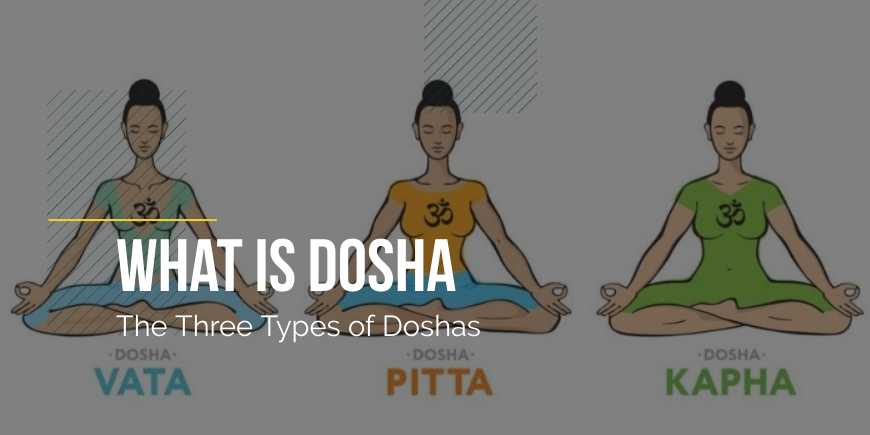
Introduction
Ayurveda defines 3 types of physiological systems – Vata, Pitta, and Kapha. They are called doshas. The word dosha signifies that these 3 factors have a natural tendency of maligning the body. They are systems that when in a balanced state run the entire physiological & psychological show. However, when imbalanced, they create all kinds of problems.
Dosha – The Corrupting Factor
The word “dosha” signifies something that corrupts or maligns. It may appear to be a scary idea that a corrupting factor runs the body. However, we can understand it with the example of a motorcycle.
Vata – The Wear and Tear
The motorcycle has a structure that facilitates movement. Let us assume that vatadosha is the system that allows movement on the motorcycle. Vata causes movement, but at the same time, it also leads to incidental wear and tears. Eventually, the final effect of vatadosha is the erosion of motorcycle parts.
Pitta – The Burning Effect
Let us assume that this motorcycle derives its power from fossil fuel – petrol. The pittadosha is the system responsible for the conversion of fossil fuel to energy. The pitta system provides the energy for movement, but at the cost of the constant heating effect. This constant heating also leads to incidental destruction/aging of the motorcycle parts.
Kapha – The Jamming Effect
We oil the parts of a motorcycle to ensure smooth functioning. Let us assume that the same motorbike was standing outside in frigid weather. And now, it is all jammed with ice. It cannot move and its engine would not start working. This is the effect of excess kapha in the body. In normal conditions, it supports and lubricates (oil) the part of the motorcycle. But in extremely cold conditions, it will jam the bike and prevent any kind of movement.
Summary
Doshas are the biophysical energies that run the metabolism. But since they eventually have an erosive effect if they get vitiated, we call them “dosha“, the erosive/corrupting factors.
Dosha – The Invisible Force
Charak Samhita says that doshas are invisible but become visible through their actions on the body. Doshas are metabolic patterns that frame, and run the body. But patterns do not have a physical presence. Their presence becomes visible through the effect that produces on the matter.
For example, Ayurveda says that all movement in the body occurs through vatadosha. Therefore, the peristaltic movement in the intestines should be a vata effect. But, why all motion is attributed to only vata?
Even if we leave the name vata behind, the central concept is that all motion in the body is deeply related. One small motion in one part of the body has a cascading effect on all other parts. Therefore, one single energy connects and controls all movements happening inside the body.
Similarly, one heat/chemical-based change in one part of the body affects all parts and other chemical changes. And one bio-physical energy controls all these changes that we may call pitta. The same goes for the kaphadosha.
The bottom line is that we may not be able to see the dosha, just like electricity. But their effects are visible, just like lightning.

Summary
The Doshas are not visible. They are systems or concepts at work, just like electricity. Electricity is not visible but its effect – the lightning is. Similarly, the effect of dosha is also visible in the body’s physiological functions.
Basis of Body Types
Ayurveda honors the uniqueness of everyone in terms of body and mind. It defines different body types. Dosha dominance is the basis for these body types. That is why there are primarily three body types – vata, pitta, and kapha dominant body type.
According to Charak Samhita, the dosha dominant at the time of fertilization rules the physiological and psychological development of the fetus. The dominant dosha frames the body structure and decides the natural biorhythm of the baby. It even defines the thinking pattern, and personality of the baby.
Each of these body types has distinct physical, physiological, and psychological aspects. I will discuss these body types in future blogs.
Summary
Doshas are the deciding factors for the formation of Ayurvedic body types. The dosha dominant at the time of fertilization defines the body type of the baby.
Psychosomatic Influence of Doshas
Dosha affects not only the body type but also the mind type. The mind type is not entirely dependent on the dosha system. It originates from the three guna or natural energies – satva (balance), rajas (activity), and tamas (ignorance). But, the dosha system takes over our unconscious reactions, and habits when the mind is unaware. As most of us are animals of habits, dosha dominance plays a huge role in our thinking and acts.
For example –
- If you have a vata dominant personality or body constitution, you may be talkative person.
- If you are a practical, thoughtful person with sharp intelligence then you may be a pitta personality.
- Whereas, if you are a stable and calm person with an excellent memory, you may be the kapha dominant type.
There are multiple other factors like cognitive powers, retention, faith, belief system, etc. that the dominant dosha defines.
Summary
The dominant dosha in a person also defines his personality, cognitive powers, retention, intelligence, and many more psychological patterns.
The concept of Dosha Balance
According to Ayurveda, the homeostasis or the balance in body metabolism depends on the three dosha – vata, pitta and kapha. These three doshas are like the three legs of a stool. Even if one leg is broken or bent, the stool will lose its stability. Fortunately, these doshas have opposite properties, for example, vata is cold and pitta is hot; Kapha is stable and vata is mobile, etc. Therefore, the doshas form a self-balancing system in the body, which helps to run and regulate the body’s physiology.
The dosha balance is akin to the physical stability of an object. Each object has a center of gravity. It stays stable if it is in the range of its center of gravity. But once it goes out of that range of stability, it topples. Similarly, the dosha governs the physiology of the body. But once they get deranged because of its causative or pathogenic factors, they open the floodgates of diseases in the body.
These doshas are perfectly balanced in a baby. However, as we grow up, we acquire unhealthy food and lifestyle habits. Stress, anxiety, and negative emotions also play a big part in disturbing the fine balance in the dosha. Seasonal changes naturally disturb the dosha balance due to environmental changes. Positive efforts are required to maintain the dosha balance against all the destabilizing factors. You can make balancing efforts as a prevention or treatment. However, as discussed earlier, everyday prevention is the key rule of health according to Ayurveda.
Summary
Three doshas – vata, pitta and kapha are present in each individual and form a natural balance. However, they may exceed or become deficient at times. This dosha imbalance creates a metabolic loophole for diseases.
Take Away
The dosha system is one of the fundamental and most intriguing concepts of Ayurveda. The doshas are the biophysical energies or metabolic patterns that drive the metabolism in an individual. They are the basis for Ayurvedic body type, diet and lifestyle recommendations, disease prevention, diagnosis, and treatment.
Enroll now and embark on a journey of self-discovery and healing.
I hope that you gained some useful information through this blog. In the next blogs, let us look at the dosha types in detail.

Responses